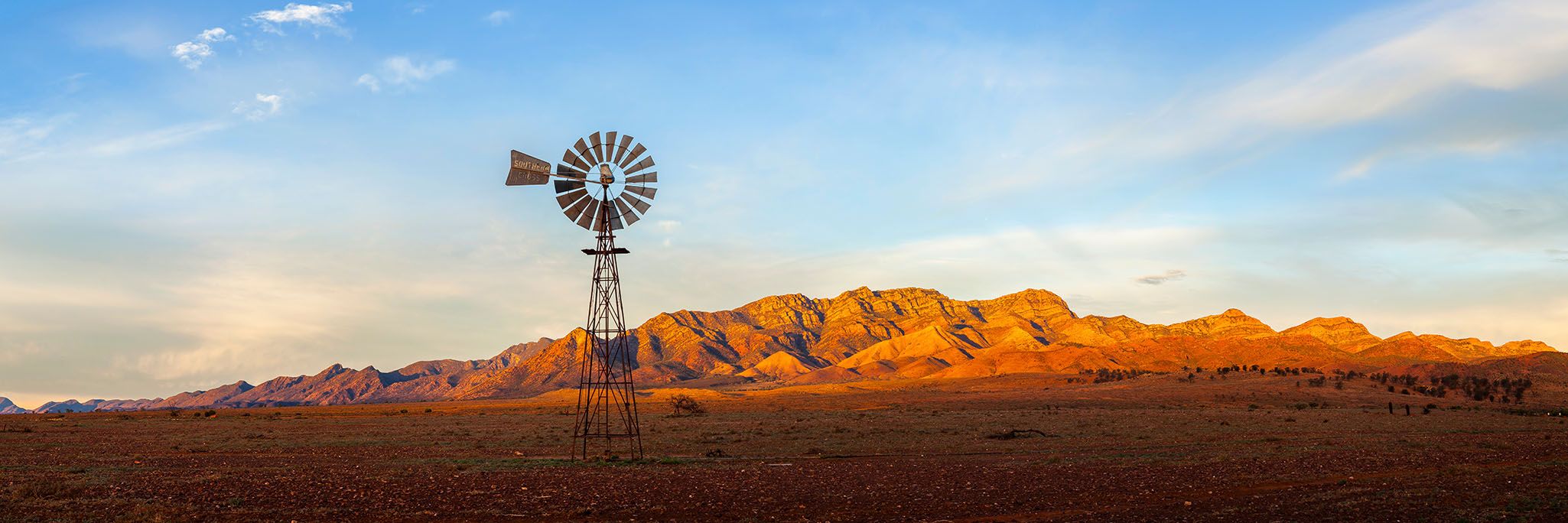Frequently Asked Questions
Why is the project needed?
The Eyre Peninsula, Upper Spencer Gulf and far North of South Australia is rich with untapped strategic and critical minerals including copper and magnetite, renewable energy resources, and other industry.
The lack of sustainable, climate-independent water in the region is largely responsible for the slow expansion and growth of these industries. Northern Water would help address water needs of industry in the regions, supporting South Australia to prosper. Northern Water will help unlock a globally significant copper resource in northern South Australia to meet increasing demands for copper and other minerals critical for renewable technologies, as well as enabling the development of future industries.
Northern Water will also play a key role in enabling South Australia to capitalise on its significant access to renewable energy and harness this for green steel manufacturing and other clean manufacturing and processing.
Why isn't the government building a pipeline to connect the existing Lonsdale desalination plant to the Eyre Peninsula, Upper Spencer Gulf and Far North?
The Adelaide Desalination Plant (ADP) was built to provide water security for metropolitan Adelaide especially during drought periods. Pumping water from ADP to northern SA was one of several options initially considered. This option was ruled out because the water would be unavailable for industrial use during times of drought when water would be needed for domestic use.
How will the cost recovery process work?
The building blocks cost recovery model is based on a user pays scenario where water customers or off-takers enter into long term agreements to buy water at a price calculated to recover the cost of construction, operation, maintenance, and supply. A significant volume of water supplied through Northern Water will be underpinned by these agreements which would be finalised prior to the Final Investment Decision.
Why does northern South Australia need more water?
The national and global transition to renewable energy requires significantly increased volumes of minerals such as copper. Increasing production in northern South Australia will become critical to meeting this demand but doing so will require large volumes of water – around 84 litres of water is used to produce just one kilogram of copper (CSIRO, 2023).
Why do we need a desalination plant to meet increased demand for water in northern South Australia?
Industries in northern South Australia and the Upper Spencer Gulf are currently reliant on water from the Great Artesian Basin and the River Murray. Desalination provides the opportunity for a new and climate-independent water source.
Will the plant provide water to the communities of Port Lincoln and the lower Eyre Peninsula?
SA Water delivers essential water services to South Australians, including the community of Port Lincoln. Northern Water is limited in its ability to be part of the solution to Port Lincoln’s water security needs as it is not yet a committed project. Additionally, if Northern Water proceeds, the earliest water would be available is in 2031.
Why is the government involved?
By building the Northern Water desalination plant and pipeline, the Government of South Australia can make sure that the social and economic benefits flow to the wider communities of the region.
Government involvement also helps minimise infrastructure duplication, and ensures the state's high environmental and community expectations are met.
Because there is such a high demand for water in northern South Australia, the initial cost of the project can be offset by long-term commercial supply agreements, which significantly reduces risk to the state.
Why is the site located in the Spencer Gulf?
The cost of transferring water from the coast to northern South Australia and the Upper Spencer Gulf is significant. Depending on the location, the cost of the pipeline and associated infrastructure may be greater than the cost of the desalination plant itself.
Early on in the site selection process several locations outside the Spencer Gulf were considered but these locations were discounted due to their significantly greater expense and inefficient use of resources.
Environmental and social data collection and analysis is currently underway to ensure the plant can be constructed and operated safely with minimal environmental impacts.
When will the project be completed?
Subject to a final decision on the project, water could be available by 2031.
What standard of water will the desalination plant produce?
Water produced through the Northern Water desalination plant will be treated t, allowing for the broadest possible range of water applications.
Northern Water, as a bulk desalinated water provider, will not be registered as a drinking water provider under SA Health regulations.
Northern Water Bulk water purchasers (off-takers) intending to supply potable water to customers must be registered as a drinking water provider under the SA Health regulations.
Will plant capacity meet projected demand?
The plant design requirements take into consideration known future demands of underwriting customers and projections for further demand in the regions.
The project will be constructed to meet the projected demand with the ability to expand in line with the critical industrial demand increases.
